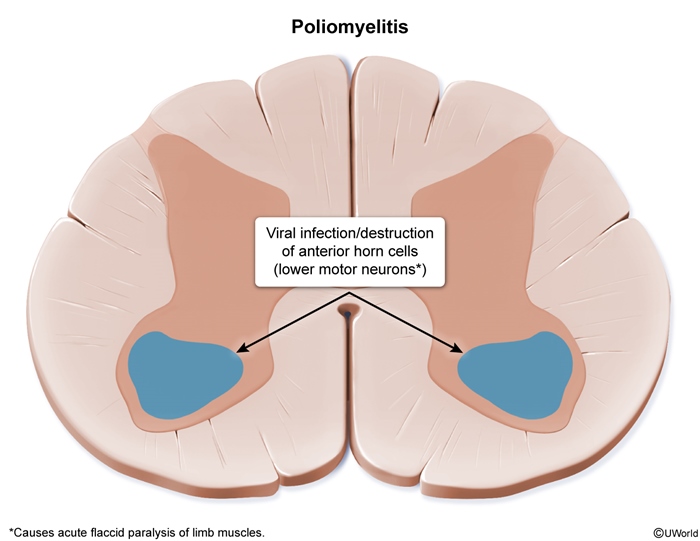Poliomyelitis
Article Sections
Introduction
Poliomyelitis (or polio) is a highly contagious disease that can lead to paralysis. A species of enterovirus causes the infection, transmission is primarily fecal-oral, and children are most often affected. Polio is usually asymptomatic, but a small percentage (~0.5%) of infections progress to acute flaccid paralysis (AFP), often causing lifelong disability or death.
The name—polio = "gray" + myelo = "spinal cord" + itis = "inflammation"—comes from the virus's ability to attack lower motor neurons (anterior horn cells) in the spinal cord's gray matter (Figure 1), leading to paralysis. Poliovirus can also target lower motor neurons in the brainstem (bulbar nuclei), which may lead to dysarthria, dysphagia, and respiratory failure.
History
Sporadic cases of polio have occurred for thousands of years; however, epidemics did not begin until approximately 1900. Paradoxically, these outbreaks affected countries with better sanitation. This is likely explained by the timing of virus exposure compared to the presence of maternal antibodies.
Continue Learning with UWorld
Get the full Poliomyelitis article plus rich visuals, real-world cases, and in-depth insights from medical experts, all available through the UWorld Medical Library.
Figures
